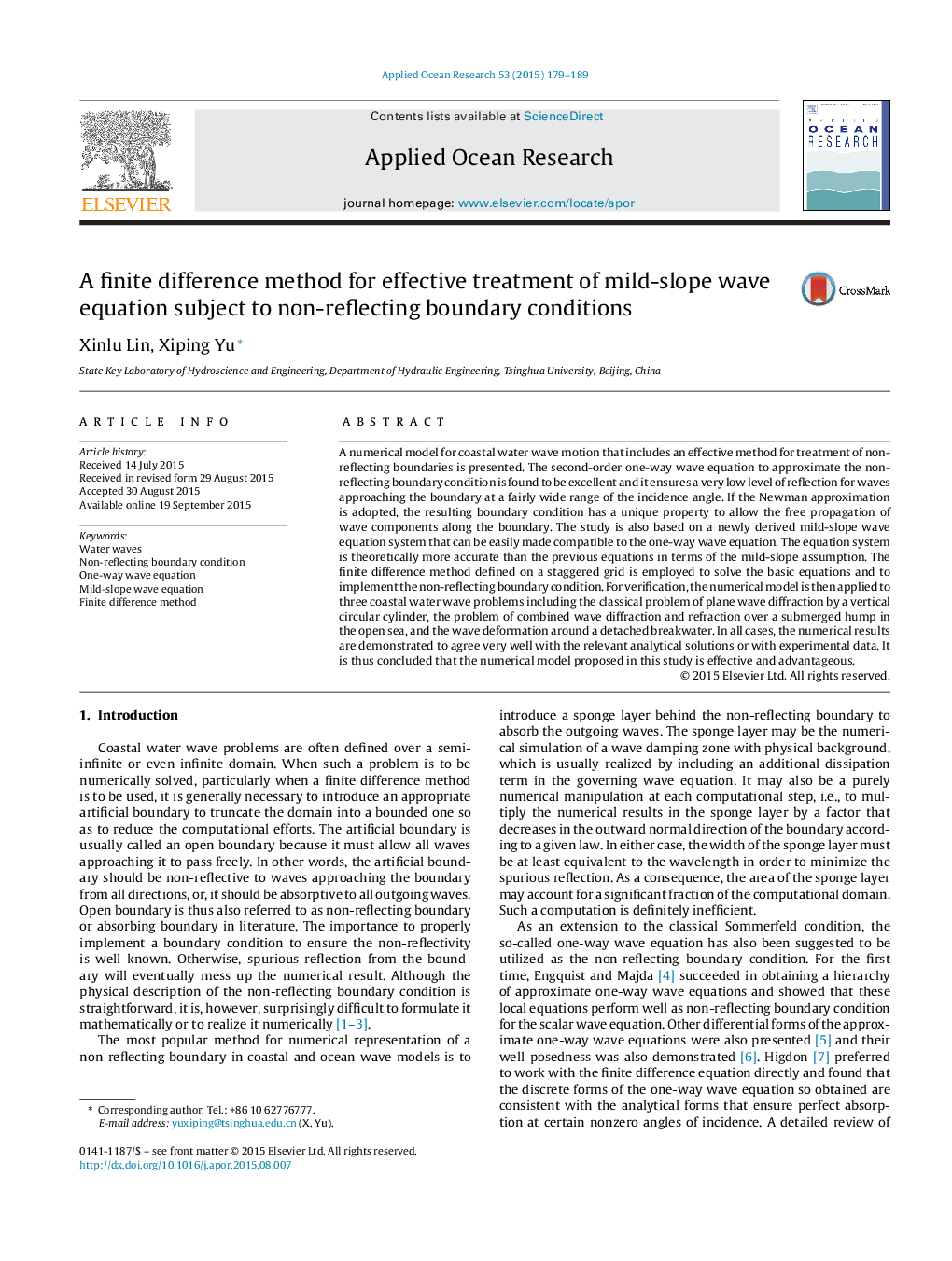| Article ID | Journal | Published Year | Pages | File Type |
|---|---|---|---|---|
| 1719911 | Applied Ocean Research | 2015 | 11 Pages |
•Effectiveness of one-way wave equations as non-reflecting boundary condition is studied.•A compatible form of mild-slope wave equation is derived.•The numerical method is extensively verified.
A numerical model for coastal water wave motion that includes an effective method for treatment of non-reflecting boundaries is presented. The second-order one-way wave equation to approximate the non-reflecting boundary condition is found to be excellent and it ensures a very low level of reflection for waves approaching the boundary at a fairly wide range of the incidence angle. If the Newman approximation is adopted, the resulting boundary condition has a unique property to allow the free propagation of wave components along the boundary. The study is also based on a newly derived mild-slope wave equation system that can be easily made compatible to the one-way wave equation. The equation system is theoretically more accurate than the previous equations in terms of the mild-slope assumption. The finite difference method defined on a staggered grid is employed to solve the basic equations and to implement the non-reflecting boundary condition. For verification, the numerical model is then applied to three coastal water wave problems including the classical problem of plane wave diffraction by a vertical circular cylinder, the problem of combined wave diffraction and refraction over a submerged hump in the open sea, and the wave deformation around a detached breakwater. In all cases, the numerical results are demonstrated to agree very well with the relevant analytical solutions or with experimental data. It is thus concluded that the numerical model proposed in this study is effective and advantageous.
